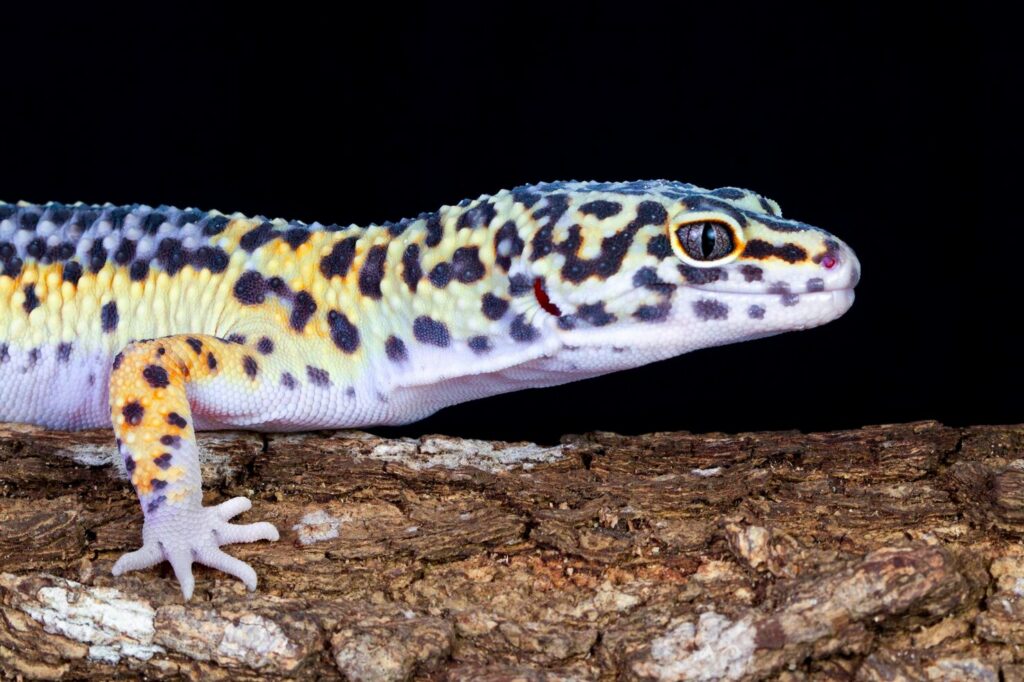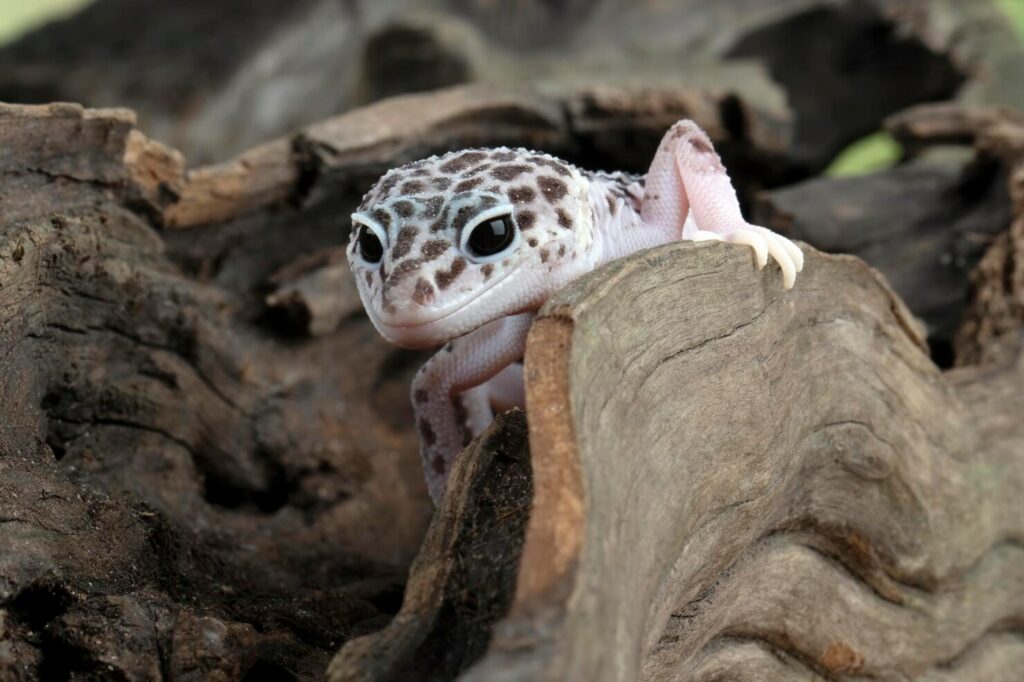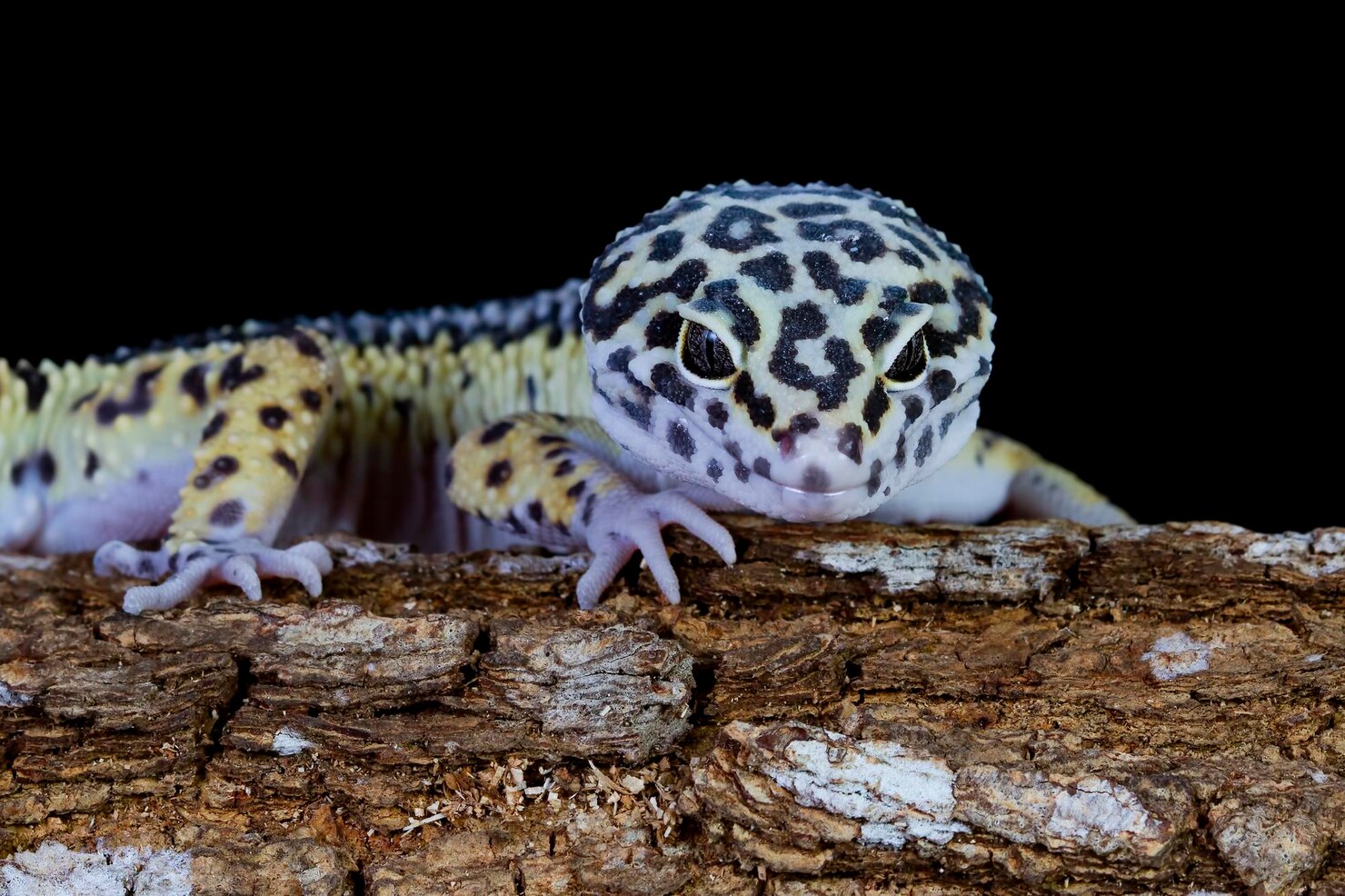Breeding leopard geckos (Eublepharis macularius) can be an incredibly rewarding and fascinating experience for reptile enthusiasts. These charming, low-maintenance lizards are known for their striking appearances and gentle personalities, making them popular choices for breeders and hobbyists. However, successful leopard gecko breeding requires careful planning, a solid understanding of their reproductive biology, and a commitment to responsible breeding practices.
In this comprehensive guide, we will take you through the step-by-step process of breeding leopard geckos.
You may als want to know what their best substrate is.
Breeding Leopard Geckos: Preparation and Research
1. Educate Yourself:
- Before embarking on a breeding project, it’s essential to have a comprehensive understanding of leopard geckos’ biology, behavior, and specific care requirements. Read books, articles, and join online forums to gather information from experienced breeders.
2. Select Healthy Geckos:
- Ensure that your breeding pair consists of healthy, well-cared-for geckos with no signs of illness or disease. Select geckos that are of appropriate age and size for breeding.

3. Housing and Habitat:
- Set up appropriate enclosures for your geckos, including separate enclosures for the male and female. Provide hiding spots, appropriate substrate, and temperature gradients to mimic their natural habitat. Make sure to provide them with a good heat lamp.
4. Conditioning:
- Before introducing the breeding pair, it’s crucial to condition them. This involves providing a balanced diet and maintaining optimal health conditions to ensure they are in prime breeding condition.
5. Record Keeping:
- Maintain detailed records of your geckos’ health, feeding schedules, and any breeding attempts. Accurate records are essential for tracking the breeding process and identifying successful pairings.
Determining the Right Time for Breeding Leopard Geckos
Leopard geckos typically reach sexual maturity between 8 and 12 months of age, although some may take longer. It’s essential to ensure that both the male and female geckos are mature before attempting breeding. Here’s how to determine if your geckos are ready:
1. Age and Size:
- Mature female leopard geckos should be at least 9 to 12 months old and weigh a minimum of 45-50 grams. Males should be of similar age and size, with well-developed femoral pores and hemipenal bulges.
2. Weight Gain in Females:
- During the breeding season, female geckos will naturally gain weight as they develop eggs. This weight gain is an indication that they are ready to breed.
3. Visual Cues:
- Observe the behavior of your geckos. Males may become more active and vocal, while females may display receptivity to the male’s advances.
Introducing the Breeding Pair
When you believe both your male and female geckos are ready for breeding, you can begin the introduction process:
1. Separate Enclosures:
- Keep the male and female in separate enclosures but within close proximity so they can see and sense each other.
2. Gradual Introduction:
- Gradually introduce the female to the male’s enclosure, not the other way around. This allows the male to assert his territory, reducing the likelihood of aggressive behavior.

3. Supervised Interaction:
- Monitor their interaction closely to ensure there is no aggressive behavior. If you notice any signs of aggression, such as biting or tail-wagging, separate them immediately.
4. Allow Natural Courtship:
- Leopard geckos are generally solitary animals, and the male will initiate courtship. He may circle the female, nudge her, or engage in tail-wagging behavior. If the female is receptive, she will allow the male to approach and mate.
5. Remove the Female:
- After successful mating, remove the female from the male’s enclosure to prevent further stress or aggression. Return her to her own enclosure.
6. Repeat the Process:
- You may need to repeat this process several times over several weeks to ensure successful copulation.
Egg Laying and Incubation
Once mating has occurred, the female will typically lay eggs within 15 to 22 days, though the timing can vary. Here’s what to expect during the egg-laying and incubation process:
1. Egg-Laying Container:
- Provide a suitable egg-laying container filled with a moistened substrate, such as a mixture of vermiculite and water. Ensure the substrate is deep enough for the female to dig and bury her eggs.
2. Egg Laying:
- The female will dig a burrow in the substrate and lay one or more eggs. After each egg is laid, she will carefully cover it with the substrate.
3. Collecting Eggs:
- Carefully remove the eggs from the egg-laying container, taking care not to rotate or disturb them. Place them in an incubation container filled with the same moistened substrate.
4. Incubation Conditions:
- Maintain a stable incubation temperature between 82°F to 86°F (28°C to 30°C). This temperature range usually results in a mix of male and female hatchlings.
5. Incubation Period:
- Leopard gecko eggs typically incubate for 35 to 90 days, depending on the temperature. Lower temperatures result in longer incubation times.
6. Monitor Humidity:
- Ensure the incubation substrate remains moist but not overly wet. Regularly check the humidity levels to prevent drying out or excessive moisture.
7. Sex Determination:
- Leopard geckos exhibit temperature-dependent sex determination. Lower incubation temperatures (82°F to 84°F or 28°C to 29°C) tend to produce female hatchlings, while higher temperatures (86°F or 30°C) result in male hatchlings.
Hatchling Care
Once the eggs hatch, you’ll need to provide proper care for the hatchlings:
1. Separate Enclosures:
- House each hatchling separately to prevent aggression and ensure they receive adequate nutrition.
2. Proper Habitat:
- Set up small, appropriately sized enclosures with hiding spots, temperature gradients, and suitable substrate. These should replicate the conditions for adult geckos but on a smaller scale.
3. Feeding:
- Offer appropriately sized live insects to the hatchlings. Dust the insects with a calcium and vitamin supplement to ensure they receive essential nutrients.
4. Hydration:
- Provide a shallow dish of clean, fresh water for the hatchlings. Ensure the water is not too deep to prevent drowning.
5. Growth Monitoring:
- Keep a close eye on the hatchlings’ growth and health. Gradually increase the size of their enclosure as they grow.
6. Record Keeping:
- Maintain detailed records for each hatchling, including their birthdate, weight, and any noteworthy observations.
7. Health Checks:
- Schedule regular health checks with a reptile veterinarian to ensure the hatchlings are growing and developing correctly.
Responsible Breeding Practices
As a leopard gecko breeder, it’s crucial to prioritize the welfare of your animals and adhere to responsible breeding practices:
1. Genetic Diversity:
- Avoid excessive inbreeding, as it can lead to health issues in offspring. Keep detailed records of your gecko’s genetics to make informed breeding decisions.
2. Health Screening:
- Ensure that your breeding geckos are in excellent health before breeding. Screen them for any underlying health conditions.
3. Ethical Considerations:
- Avoid breeding geckos with known genetic defects or health issues. Ethical breeding promotes the health and well-being of the animals.
4. Quality of Life:
- Provide proper care, nutrition, and habitat conditions to ensure the quality of life for your geckos.
5. Rehoming Excess Offspring:
- Be prepared to find responsible homes for hatchlings you cannot keep or sell. Avoid overbreeding and contributing to the reptile trade surplus.
Conclusion of Breeding Leopard Geckos
Breeding leopard geckos is a fascinating journey that allows you to witness the incredible process of life from egg to hatchling. However, it’s a responsibility that requires careful preparation, commitment to the welfare of your geckos, and adherence to ethical breeding practices.
By educating yourself, providing optimal care, and following the steps outlined in this guide, you can increase your chances of successfully breeding healthy and thriving leopard geckos. Remember that breeding should always be approached with the well-being of the animals as the top priority, ensuring that these captivating creatures continue to be cherished in the world of reptile enthusiasts.

